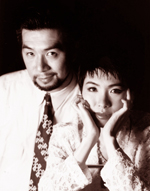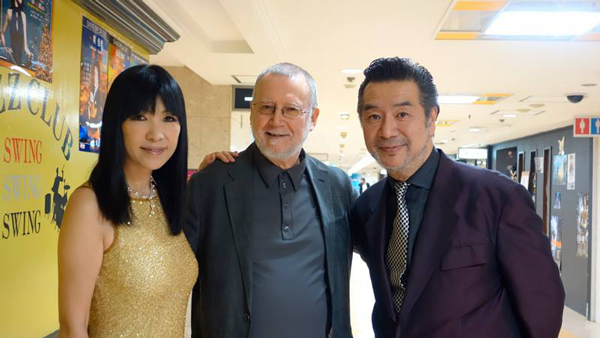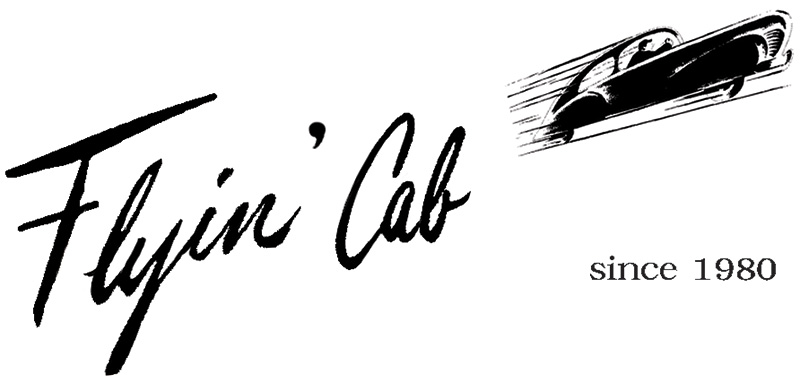
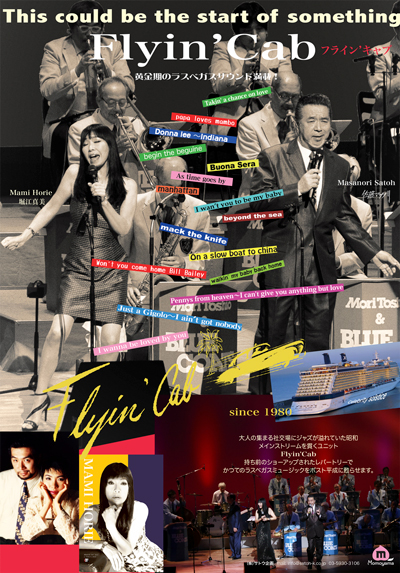 |
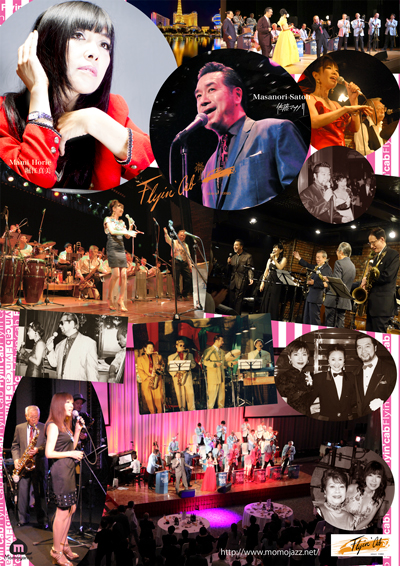 |
僕がFlyin'Cabを好きなワケ
It was about 21years ago … 福島市内の「Take3」という店にライブの演奏を見に行きました。テディ金城トリオと「Flyin' Cab」と呼ばれているジャズのボーカルグループの演奏。実は全然知らないミュージシャンでしたが、その店のライブ演奏のレベルはいつも高かったので、いいジャズを聴く事を楽しみにしていました。入った時にはテディ金城のグループが典型的なビーバップのスタイルでジャズスタンダードを楽しく演奏していました。
ピーター J スコット
Flyin’ Cab - Last Survivors of Mid-20th Century Mainstream Jazz The years 1945 to about 1960 are considered by many jazz aficionados to be the period when jazz improvisation reached its apex as an art form. The big band swing era of the 30’s and 40’s was the time when jazz reached the apex of its popularity with the general public - live jazz was everywhere, the public was in love with dancing, and the musicians were in love with the music and the free life style. While musicians were usually able to play short improvised solos within the big band format, it was in the many after-hours jazz clubs that they were able to relax and to refine and extend their improvisation skills on the chord changes of the blues, or those of the musically most interesting popular songs of the day It was into this milieu that the young alto player Charlie Parker, a young veteran of the Jay McShann and Earl Hines big bands found himself, and in the company of like- minded young musicians, by 1945 had perfected a new style of improvisation that extended the styles of the great swing era soloists such as Lester young, Coleman Hawkins, Roy Eldridge etc.. This form of improvisation, known as “be-bop”, freed the musicians from certain harmonic and rhythmic restrictions of the earlier style, and the masters of the genre, such as Parker, Dizzy Gillespie, Bud Powell, Fats Navarro etc., were able to create solos at an astonishing level of musical and rhythmic creativity. These great players in turn influenced countless others, and be-bop became the new jazz mainstream. Around 1948, perhaps in reaction to the sometimes frantic music of the beboppers, a new style of jazz developed that took much of its inspiration from the subtle and swinging improvisations of the great swing tenor player Lester Young. Known as Cool jazz, soloists combined the harmonic and rhythmic innovations of Charlie Parker with the softer, almost vibrato less playing of Young to further extend the genre – Miles Davis, Zoot Sims, Stan Getz, Chet Baker etc. being typical of the players in this style. The great jazz teacher Lennie Tristano, while insisting that his students develop individual styles, demanded they sing and learn to play the solos of Parker, Lester Young etc. in order to thoroughly appreciate the jazz improvisation genre and the artistic genius of its greatest performers. This complete jazz education can be seen in the playing of the greatest of his students such as Lee Konitz and Warne Marsh, who went on to became improvisers of astonishing individuality and creative musical ability. By the early 50’s, most jazz musicians were playing in a blend of these styles, and the overall level of improvisational creativity remained extremely high throughout the 1950’s, perhaps culminating in the work of Miles Davis and John Coltrane in 1959 – but the glory days were short-lived. With the growing popularity of rock ‘n’ roll and the movement of some musicians into various forms of “free” jazz, the popularity of jazz with the general public waned. Those remaining great improvisers continued to play, but jazz itself became fragmented, and its days of glory now belong to the past. Jazz vocalist were always an integral part of the jazz scene, from the early work of Louis Armstrong, inventor of “scat” (the wordless singing form of improvisation), to the great swing era vocalists such as Billie Holiday and Ella Fitzgerald, to the 40’s bebop vocalists like Sarah Vaughn, Betty Carter and Anita O’Day (who incorporated the harmonic and rhythmic innovations of the era), to cool jazz stylists of the likes of Chris Connor. There was also a remarkable group of 40’s and 50’s vocalists associated with be- bop who scatted in the genre and put words to some of the jazz great solos (vocalese), such as Eddie Jefferson’s fine version of Coleman Hawkins’ classic “Body and Soul" solo. The great King Pleasure did likewise with James Moody’s solo on “I’m in the Mood for Love”, and Annie Ross’s made her famous vocalese tribute to Wardell Gray’s great playing on “Twisted”. The 40’s and 50’s also saw the advent of highly musical vocal combinations like Lambert, Hendricks and Ross, who combined scat, vocalese and superbly crafted group singing for their renditions of jazz and standard classics, which lead directly to later gifted groups like Manhattan Transfer and the Double Six of Paris. Probably the one country where an appreciation for great jazz improvisation and musicianship still exists to some degree is Japan, and this is where Flyin’ Cab enters the picture. Mami Horie is a remarkable jazz pianist, vocalist and scat singer, and her orientation is firmly in the great tradition of the improvisation mainstream. The same may be said of Masanori Sato, who like Mami has had wide experience as a vocalist in the Tokyo big band and jazz club scene. I had the good fortune to hear their Flyin’ Cab combination when they came to Fukushima some 20 years ago. What a revelation it was! Here was a group with a true understanding of the music of the great jazz improvisers and jazz singers of the past. Their performance that night shone with that swinging spirit as they sang straight vocals, scat, and vocalese with astonishing musical skill, creativity and feeling – and, they were able to further color their performances with their own distinctive, very hip, personalities – and they still do it, and they are outstanding! Flyin’ Cab – Last Survivors of Mid-20th Century Mainstream Jazz - indeed! Peter J Scott |
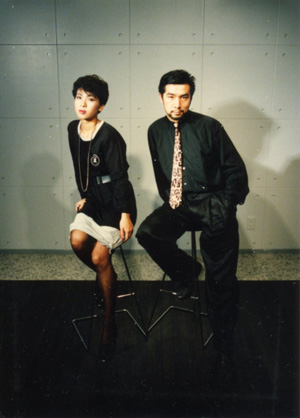 |
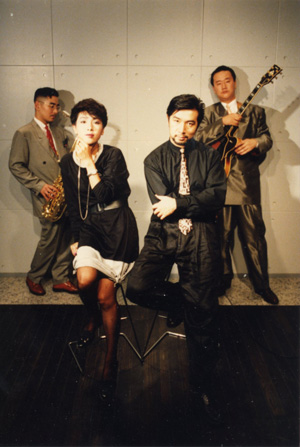 |

